Buddhism: Five Buddha Families Part 5 – AMITABHA – RED Buddha of Infinite Light - Compassion for All
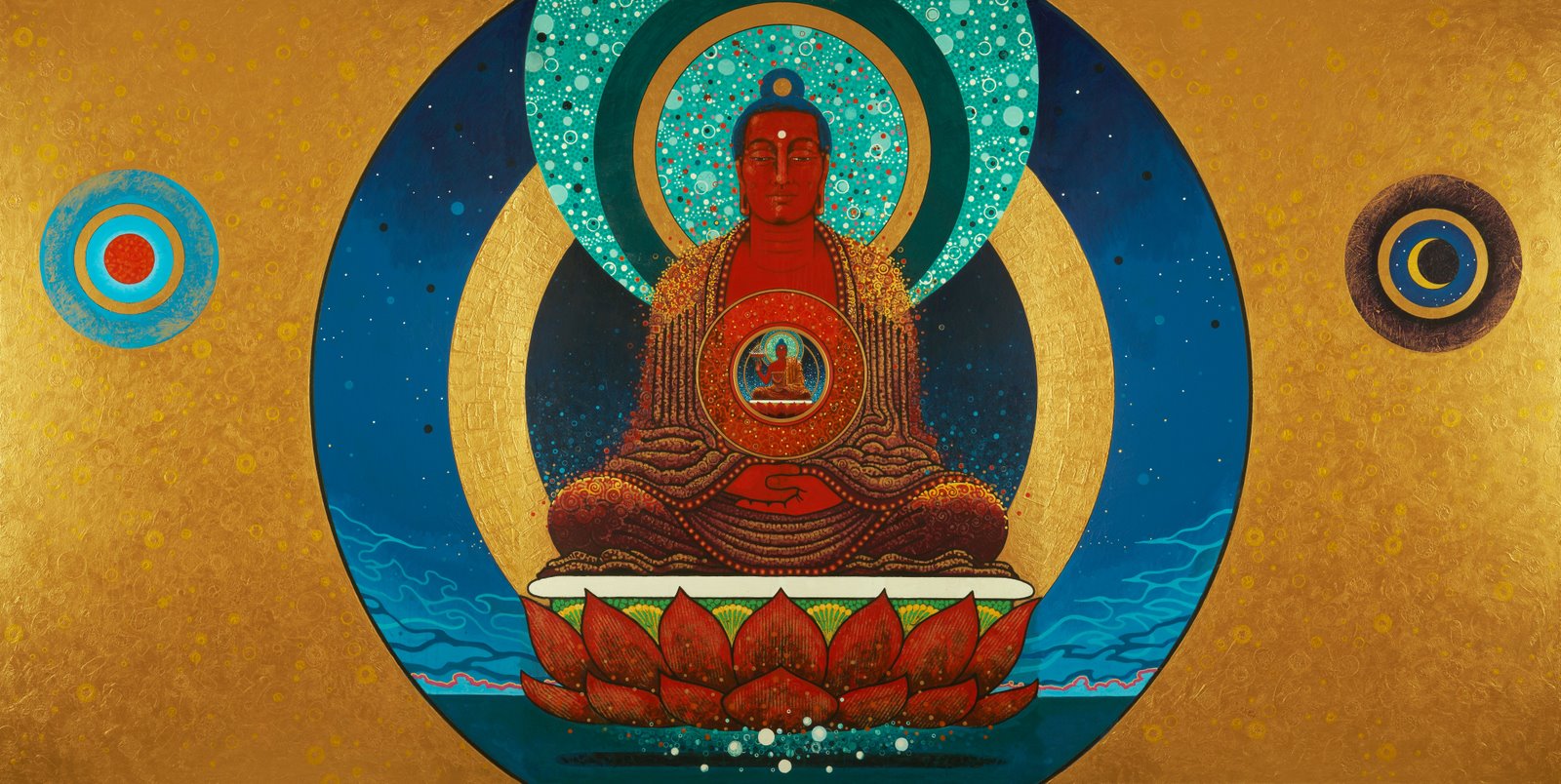
It’s a wonderful thing to know that for every unwanted trait we find within ourselves there is a positive counterpart waiting to be cultivated within us. We can consult the list of the Five Buddha Families and see, what is bothering me? What just got triggered? Am I perceiving something about someone else that is beginning to generate ill will, am I getting impatient and starting to feel that old familiar aggression arising within me? We can rest in the knowledge that that negative reaction is NOT who we are and we can consult the wisdom of the five Buddhas and with some effort develop patience to cultivate the perfections that they represent. With the quality of reflection we can see more clearly that our perception is only telling us half the story because whatever negative quality we see in someone else they too have the paramitas or perfections that are waiting to be cultivated and we can learn and through practice to respond from the better angels of our natures rather than react from our old habits of thought patterns and illusory self that gets created every time we get triggered. Remember: Our mind is our tool and we can train it – we do not have to be slaves to our habitual reactions. We got this.
Let’s review the whole list of the Five Buddha Families one final time:
• Buddha Family – VAIROCHANA - “Consciousness” - Center - White – All accommodating - Teaching the Dharma - Uses the means of Turning the Wheel of Dharma to remove the maladaptation to stress that manifests as ignorance – Wisdom of essence of the dharma.
• Karma Family – AMOGHASIDDHI - “Intention” - North – Green - Mental formation, concept - Fearlessness - Uses the means of protection and destruction to remove the maladaptation to stress that manifests as envy and jealousy - Wisdom of perfect practice.
• Vajra Family – AKSHOBYA - “Form” – East – Blue – Non-dualist, humility – Uses the means of Pacification to remove the maladaptation to stress that manifests as aggression – Wisdom of reflection.
• Ratna Family – RATNASAMBHAVA - “Feelings” – South - Gold/Yellow – Equanimous, giving – Uses the means of enrichment to remove the maladaptation to stress that manifests as increasing, pride, and greed – Wisdom of equanimity.
• Padma Family – AMITABHA - “Perceptions” - West – Red – Inquisitive, meditation – Uses the means of magnetizing to remove the maladaptation to stress that manifests as subjugation, selfishness – Wisdom of observation.
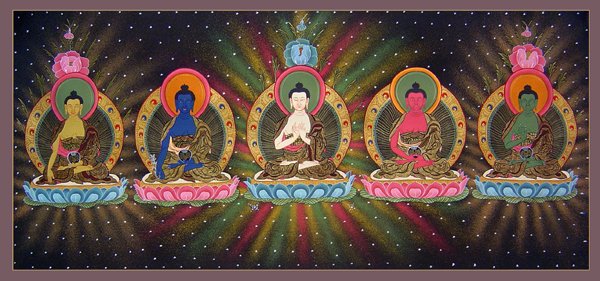
Today we are looking at AMITABHA who is associated with the skandha of “Perceptions”
(Sanskrit) or khandhas (Pāḷi) means "heaps, aggregates, collections, groupings". In Buddhism, it refers to the five aggregates concept that asserts five factors constitute and completely explain a sentient being's mental and physical existence. ~Wikipedia
For the intents and purposes of this essay, the practical wisdom of AMITABHA is that this Buddha represents infinite, unconditional love. If you have ever loved a small child who acts up and makes lots of mistakes, I know myself, as a mom, I see my own son as an imperfect love bug that reflects the unconditional love I have for him back to me. He doesn’t have to be perfect for me to love him and I will never stop loving him. This kind of unconditional love we can cultivate to radiate out to everyone we encounter. When we begin to see people in this way we begin to realize the folly in judging people for being imperfect. And that is also quite a relief! We can also find this feeling in our close friends who screw up from time to time. We love them anyway! And we are there for them as they pick themselves up and dust themselves off. As AMITABHA is the skandha of perception I hope you can see the association – that it is our perception that determines the meaning we give to situations and with some dedication and effort we have 100% control – and responsibility – to change our perceptions of people and things.
So, we take care of our part and let go. We cultivate the paramitas and do not have expectation on how we are received by others. The seeds are in all of us and we never know when they will sprout in others so we relinquish control of that. Do you see the wisdom in this??
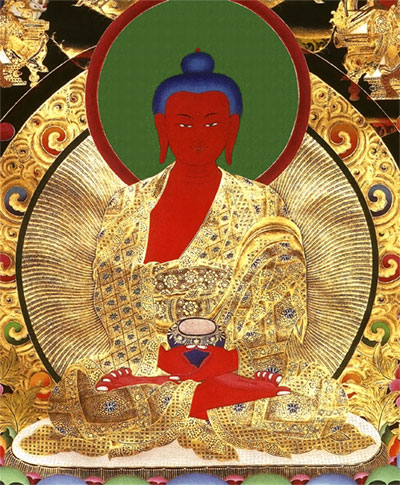
Motif Meanings
AMITABHA is nearly indistinguishable from Sakyamuni except for the fact that his unique emblem is the lotus which represents gentleness, openness, and purity thus he is the Lord of the Lotus Family. He sits with his hands in the meditation mudra. Red is the color of compassion. As his direction is WEST red is also the color of the setting sun which sets in the west.
Infinite Love, Infinite Compassion
It is said that Amitabha directs his compassion to the lowest of beings, so low that they cannot at this time save themselves. When we view others through the lens of this wisdom we can see how important it is to stop the habit of judging and begin the habit of compassion. If someone lacks the self-awareness to see where they need salvation from the poisons that are currently running them doesn’t it make sense to not make it worse by judging them? Doesn’t the wisdom of Amitabha make a light bulb go off in your head that extending our compassion to each and every person is the wisest thing to do? Amitabha is the Buddha of salvation, not just our own but everyone’s.
Pure Land
Pure Land Buddhism is the largest sect of Buddhism in the world. The mythology is that chanting the name and mantra of Amitabha will immediately clear all delusions, especially on your deathbed, and guarantee you a rebirth in his pure land called Sukhavati and end the cycle of rebirth called samsara. Does this mean reincarnation is real and there is really a heavenly pure land? It really doesn’t matter.
The answer that is most on point is: we shouldn’t overthink it. As we’ve seen over and over in this series at the level of ultimate reality, Oneness or Emptiness is what all things are. What we believe that we normally perceive our ordinary world to be is not a static reality of substance either. It is dependent on other co-arising conditions known as dependent arising. So, beyond the level of our our limited perceptions is the level of mind, which is completely unaffected by perception, and their all things are possible and real. So, with this truth in mind If all things are co-arising dependent on mind, if we work to make the conditions right Pure Land can exist. So, if the Pure Land is not a real place that we can arrive at after death in an objective sense, a place of mountains that are adorned with sparkling jewels and birds who give teachings on the Dharma, it makes absolutely no difference. Either way we have to practice the perfections to attain perfect peace and ultimately enlightenment.
The point of this practice is to fully engage body, mind and speech in Dharma, and thus purify our minds of obscurations and leave no room for obstacles and cravings. Then, we approach paradise. Peace. Stillness. And, the opportunity to develop realizations. ~Buddhaweekly.com
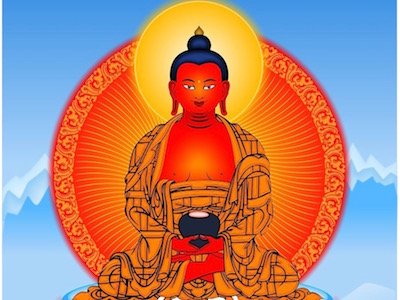
Conclusion and Compassion
So, compassion always starts with ourselves and we can have compassion for ourselves as we traverse the path of integration and not perfectly getting this down the first few or hundred times. We acknowledge, we forgive then we drop it. Over and over. We do this for ourselves and soon we will be able to do this for others. We practice, we meditate and we study the teachings of the Buddha. In this way, we will realize the Four Noble Truths:
1 Suffering
Life always involves suffering, in obvious and subtle forms. Even when things seem good, we always feel an undercurrent of anxiety and uncertainty inside.
2 The Cause of Suffering
The cause of suffering is craving and fundamental ignorance. We suffer because of our mistaken belief that we are a separate, independent, solid “I.” The painful and futile struggle to maintain this delusion of ego is known as samsara, or cyclic existence.
3 The End of Suffering
The good news is that our obscurations are temporary. They are like passing clouds that obscure the sun of our enlightened nature, which is always present. Therefore, suffering can end because our obscurations can be purified and awakened mind is always available to us.
4 The Path
By living ethically, practicing meditation, and developing wisdom, we can take exactly the same journey to enlightenment and freedom from suffering that the buddhas do. We too can wake up.
We cease suffering to ultimately liberate ourselves and work for the liberation of all beings.
What do you think?
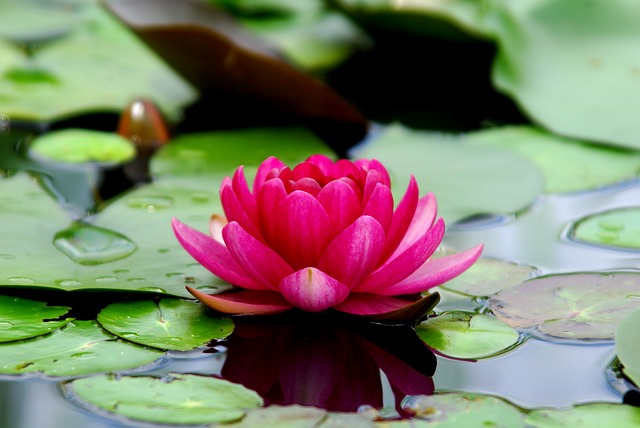

@soulsistashakti is a musical artist and writer based in NYC as well as a practitioner of Buddhist teachings. You can check out my music on my FB artist page at https://www.facebook.com/soulsistashakti
Check out my blog for other essays on Buddhism and meditation
Recent posts
Buddhist Psychology Part 4: Transform Yourself With Buddha RATNASAMBHAVA - Gold Buddha of the South - Generosity
Transform Your Life With the Five Buddha Families - Part 3- AKSHOBYA – THE DEEP BLUE BUDDHA "Immovable One"
THE FIVE BUDDHA FAMILIES PART 2 - Green Buddha of the North - AMOGHASIDDHI – Fearless Energy and Action
Buddhist Psychology: What Are the Five Buddha Families?
Awaken Your Creativity/Writing With Morning Pages and Buddhist Mindfulness Practices
My First 10 Day Buddhist Samatha-Vipassana Meditation Retreat in NYC
Reveal this post
There is definitely more suffering when people feel detached from one another.
Just in softening our attitude toward others a but we can feel our connection and our humanity